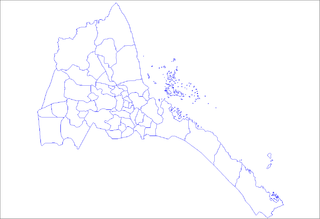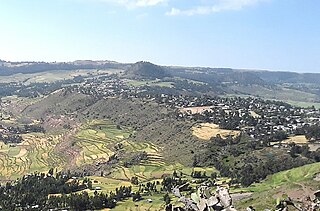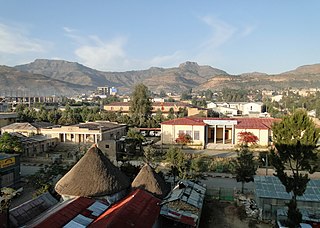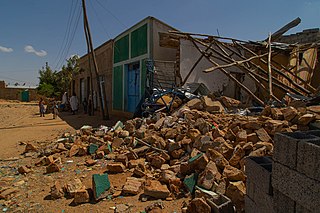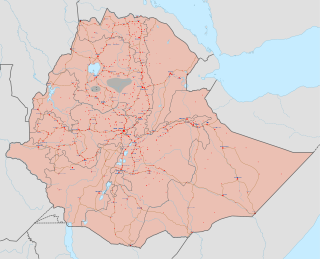| Date | Place | Number | Perpetrators | Sources | Notes |
|---|
| 4-10 November 2020 | Shiglil | 7 | Government-allied militias | [22] | |
| 9-10 November 2020 | Humera | 54 | ENDF, Amhara militia, Fano | [23] [24] [25] | related: EHRC report [26] |
| 5-19 November 2020 | Dansha | 25 | | [26] | Civilians were caught in the crossfire between warring parties |
| 9–10 November 2020 | Mai Kadra | 600 [19] or 1100 [21] | Samri kebele youths [27] [19] [21] or Amhara militias [28] [29] [30] | | victim ethnicity and perpetrators disputed |
| 13-17 November 2020 | Zalambessa | 86 | EDF | [31] | Killed mostly in house-to-house searches after shelling the town |
| 14–17 November 2020 | Bisober | 27-31 | TPLF & ENDF | [26] [32] [33] | Shelling crossfire and house-to-house search |
| 17 November 2020 | Shire | 200 | EDF | [34] | Elders say people were "slaughtered like chicken" |
| c. 19 November 2020 | Hitsats | 305 | TPLF [35] [36] or EDF [37] [38] [39] [36] | | Perpetrators disputed. EEPA claims 300 Eritrean refugees executed by EDF, HRW claims EDF, refugees claim local Tigrayan militia or EDF, Ethiopia claims TPLF; five humanitarian workers killed in battle [40] [41] [42] |
| 21 November 2020 | Idaga Hamus | Dozens | EDF | [43] | after capture of town |
| c. 21 November 2020 | Adigrat | 12 | EDF | [43] [44] | after capture of town |
| 27-28 November 2020 | Wukro | 220 | EDF, ENDF | [45] | killing spree accompanying the massive looting of the town |
| 28–29 November 2020 | Axum | 750 | EDF | initial body counts; [46] [47] in-depth [48] [49] | Daily killings preceded and followed the main massacre. |
| 30 November 2020 | Dengelat | 80–150 | EDF | [50] [51] | at Maryam Dengelat church |
| late November/early December 2020 | Irob | 52 | | [52] | 50 men, 2 women |
| 1 December 2020 | Mekelle | 27 | ENDF | [53] | |
| 4–7 December 2020 | Ziban Gedena | 150-300 | EDF | [54] | Also: 150 houses burnt, 90% of livestock killed, harvests burnt and stolen |
| 13 December 2020 | Kola Tembien | 20 | ENDF | [55] | Soldiers kept terrorising civilians in Tembien in an effort to get the location of the leader of the TPLF. |
| c. 23 December 2020 | Hawzen | up to 70 | EDF | [56] | 70 bodies recognised by witness |
| 5 January 2021 | Gu'itelo | 29 | EDF | [57] | at Medhane-Alem church |
| 8 January 2021 | Bora | 70–187 | ENDF | [58] [59] : 31 | Killing spree after a battle with TDF |
| 9 January 2021 | Ari Giyergis | 12 | ENDF | [60] | 12 young deacons taken out of the church and executed |
| mid-January 2021 | Mahbere Dego | 50–74 | ENDF (Amharic speaking) | [61] [62] | People were executed and thrown off a cliff, according to geolocated video evidence. |
| January 2021 | Irob | 187 | ENDF, EDF | [63] | includes 30 Coptic priests, 50 women, 100 children |
| 1 February 2021 | Kerebera | 5 | ENDF & EDF | [60] | five priests were killed in the village church |
| 10 February 2021 | Wukro | 18 | EDF | [64] | killed in street protests |
| 10 February 2021 | Kola Tembien | 182 | ENDF, EDF | [65] | house-to-house killing; access to bodies permitted on 15 Feb, by which time many were partially eaten by wildlife |
| few days before 14 February 2021 | Adwa + Shire | 30 | | [64] | killed in street protests |
| 15 Feb | Cheli | 180 | EDF | [66] | |
| c. 19 February 2021 | Khisret, Gijet | 100+ | ENDF | [67] | |
| 22 February 2021 | Debrekerbe | 9 | EDF | [68] | |
| 23 February 2021 | May Weyni | 80 | EDF | [66] | |
| 1-3 March 2021 | Humera | 250 | Amhara militia, Fano, EDF | [69] | |
| 11 March 2021 | Enkikumel, near Shire | 100+ | ENDF/EDF | [70] [71] | Reports suggest that ENDF/EDF soldiers went door to door and kidnapped civilians in order to force militias to give up their weapons and surrender. Once the militias surrendered, they and the remaining hostages were all executed. All victims were reportedly young men. |
| 14 March 2021 | Wukro | 3-5 | ENDF | [72] | retaliation for attacks by TDF |
| 23 March 2021 | Inda Teka Tesfay between Mekelle and Adigrat | 4 | ENDF | [73] | Médecins Sans Frontières staff observed the execution of at least four men by the ENDF. They were taken off a public bus and executed. |
| 24 March 2021 | Grizana, near Samre | 11-18 | EDF | [74] [75] | |
| 30 March - 5 April 2021 | Wukro Maray | ~161 | EDF & ENDF | [76] | As revenge for lost battles |
| 1 or 3 April 2021 | May Atsmi, Tisha and Haddush Addi, Tahtay Maychew district | ~140 | EDF | [76] | As revenge for lost battles |
| 5 April 2021 | Debrekerbe in Zana district | 116 | EDF | [68] | |
| 5 April 2021 | Haruka kebele, Afar Region | 30+ | Somali Regional State special forces | [77] | |
| 8 April 2021 | Freweyni | 7 | EDF | [76] | |
| 8 April 2021 | Hawzen | 30+ | EDF | [76] | |
| 8 April 2021 | Around Wukro Maray, between Shire and Axum | 200+ | ENDF and EDF | [76] | |
| 12 April 2021 | Adwa, Central Tigray | 3–9 | EDF | [78] [79] | |
| 12 April 2021 | village near Axum | 11 | presumably EDF | [80] | |
| 12 April 2021 | Hugumburda, Southern Tigray | 15 | Amhara militias and ENDF | [80] | |
| c. 12 April 2021 | Wukro Maray town near Aksum | 300+ | EDF | [80] | |
| 29 April 2021 | Idaga Hibret | 20 | EDF | [81] | |
| 30 April 2021 | (Bure, Amhara and Danchu Kebelle) | 21 | unknown | [81] | During the attacks, some civilians had reportedly been burnt alive. |
| 8 May 2021 | Guh village, Hawzien, Eastern Tigray | 19 | EDF | [82] [83] | |
| 12 June 2021 | Menji and Guyya villages near the town of Abi-Adi Tembien. | 16 | EDF and ENDF | [84] | Reports indicate that cluster bombs and phosphorus gas was used in the shelling of both villages. |
| 22 June 2021 | Togoga village | 50-80 | ENDF | [85] | 50-80 civilians were killed in an airstrike on the village's market area. Reports indicate that the ENDF blocked ambulances from attending to the dead and wounded in the village, possibly increasing the casualty toll. |
| 17-19 July 2021 | Yalo | 20 | TDF or ENDF | [86] | Victims of shelling |
| ~3 August 2021 | Humera and elsewhere along the Tekezé River | 95 | Amhara militia, Fano, EDF | [87] | The victims had been shot with their hands tied |
| 5 August 2021 | Galikoma, Afar Region | 107-200 | TDF | [88] [89] [90] | Indiscriminate killing by TDF |
| 31 August–4 September 2021 | Chenna (near Dabat) | 120-200 | TDF | [91] [92] [93] | Extrajudicial killings; Using civilians as human shields |
| 9 September 2021 | Kobo | 600 | TDF | [94] [95] [96] [93] | Extrajudicial killings |
| 30 October 2021 | Kombolcha, Amhara region | 100+ | TDF | [97] [98] [99] | Extrajudicial killings, looting and ransacking WFP and UN trucks and aid essentials, private and public properties. |
| 8 October 2021 | Mekelle | 3 | ENDF | [100] | Airstrike killing civilians, all children |
| 21 November 2021 | Prison camp near Mirab Abaya, SNNPR | 83 (+20 missing) | Ethiopian prison guards, ENDF, lynch mob | [101] | Massacre of imprisoned Tigrayan soldiers; according to The Washington Post , the prisoners in question had not engaged in combat against the government. |
| 6 January 2022 | Mai Aini refugee camp | 3 | Unknown | [102] [103] | Airstrike killing Eritrean refugees, including 2 children |
| 7 January 2022 | Dedebit | 56-59 | ENDF | [104] [105] [106] [107] [108] | Airstrike hitting a camp for internally displaced people; has been called a war crime by the UN and Human Rights Watch |
| 10–11 January 2022 | Mai Tsebri and Hiwane | 19 | ENDF | [109] | Drone strike killing civilians |
| 23 February 2022 | Chenna and Kobo | 24+ | TDF | [110] | Extrajudicial killings |
| 23 February 2022 | Berhale | 5+ | Unknown; suspected to be the TDF | [111] [112] | Extrajudicial killings of Eritrean refugees |
| 26 August 2022 | Mekelle | 4 | ENDF | [113] | Airstrike killing civilians, including 2 children |
| 6–12 September 2022 | Sheraro | 40+ | EDF | [114] [115] | Extrajudicial killings of civilians, including Eritrean refugees |
| Shimblina | 46 | ENDF/EDF | [116] | |
| 13–14 September 2022 | Mekelle | 10 | Unclear; suspected to be the ENDF | [117] [118] | Airstrike killing civilians, |
| 13–15 September 2022 | Kobo | 17+ | TDF | [119] | Systemic torture and killings of civilians |
| 4 October 2022 | Adi Daero, La'ilay Adiyabo | 50-65+ | ENDF | [120] [121] | Airstrike hitting a school sheltering internally displaced people |
| 24 October 2022 | Egela district, Tigray | 96 | EDF | [122] | Extrajudicial killings of civilians |
| 26 October 2022 | Adwa | 60+ | ENDF/EDF | [123] | Extrajudicial killings of civilians |
| 17–25 November 2022 | Eastern Zone, Tigray | 111 | EDF | [124] [125] | Kidnapping, extrajudicial killings of civilians; 241 houses destroyed and overall "widespread looting." |
| Mid December 2022 | Central Zone, Tigray | 550+ | EDF and Amhara militias | [126] | Extrajudicial killings and mass rapes. |





